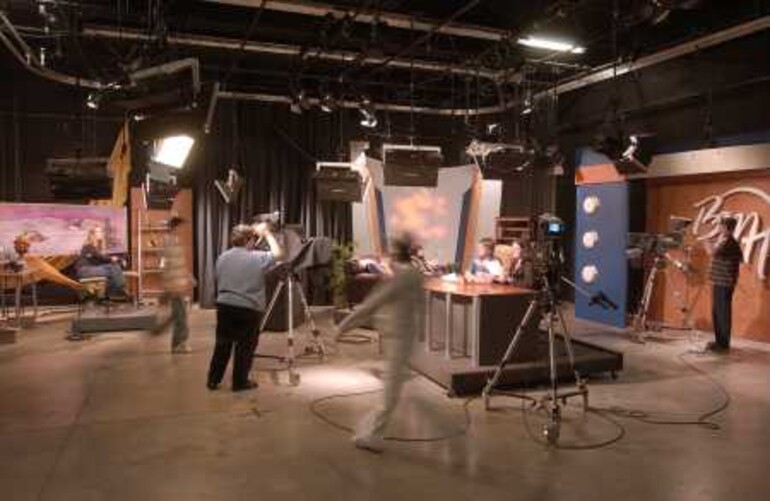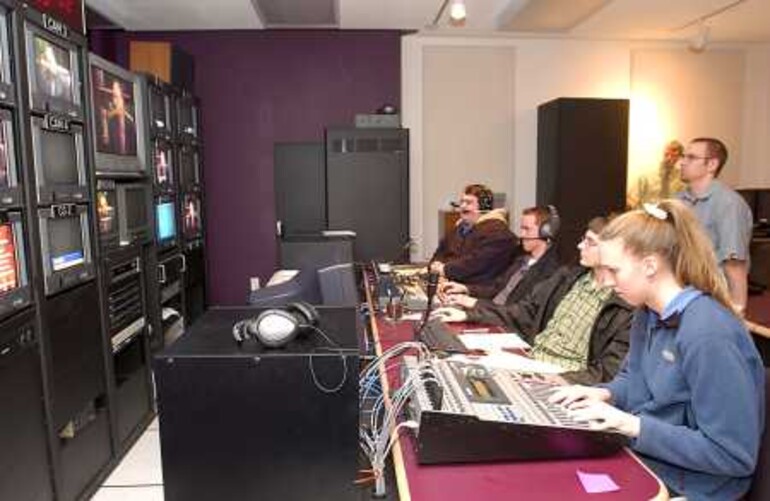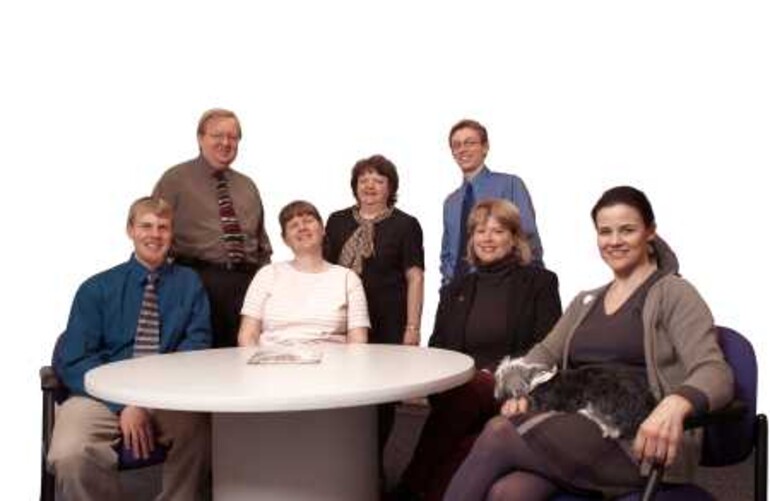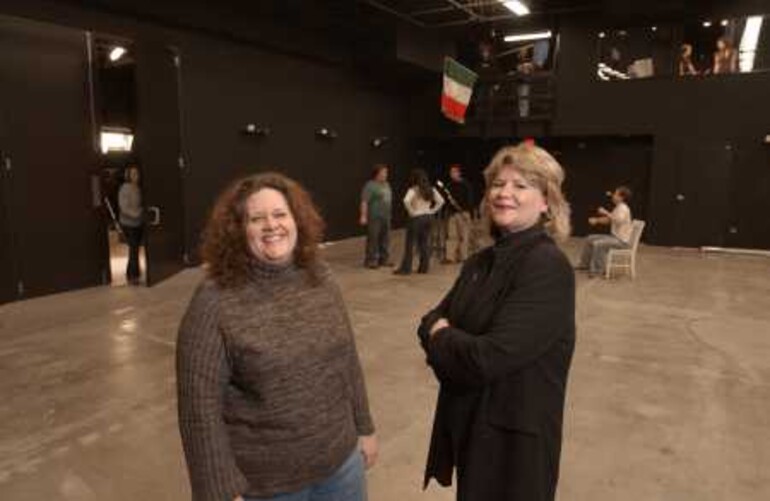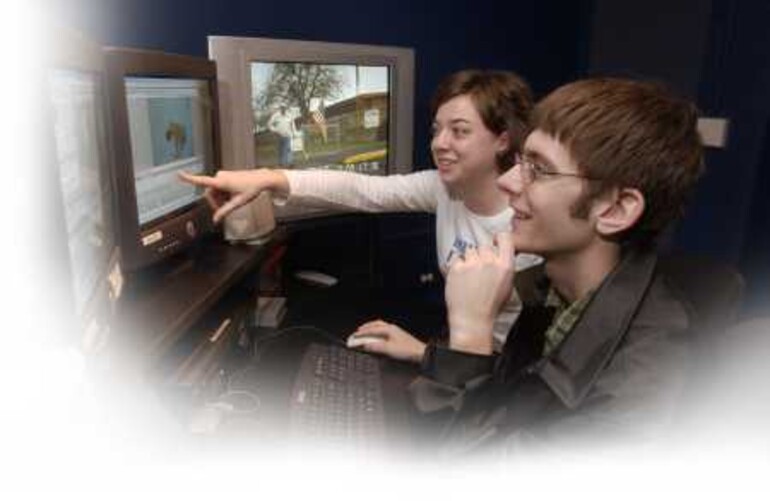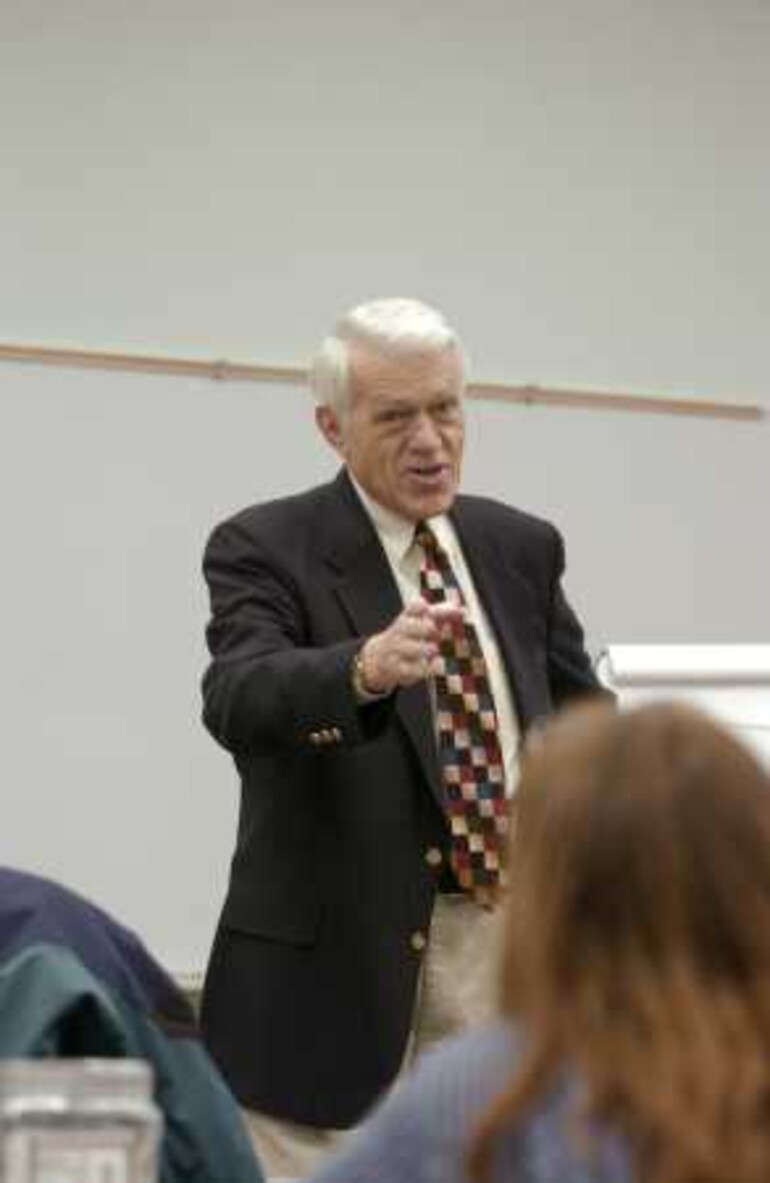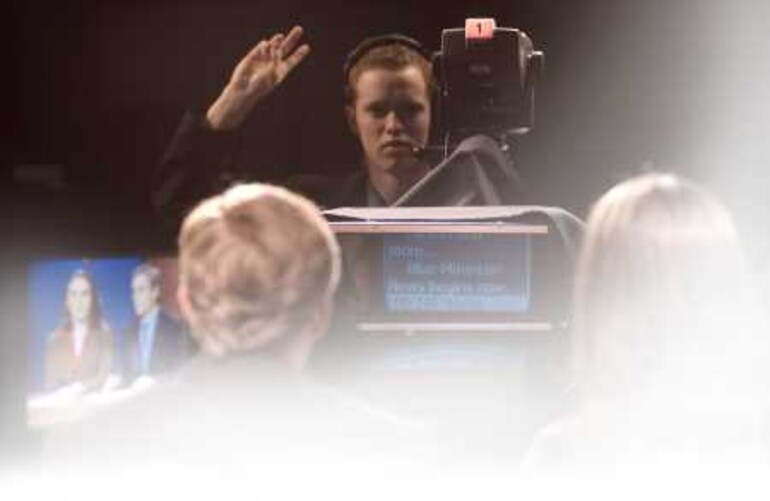It’s crunch time—5 p.m.—in the control room of Blue Mountain News.
News producer Tristan Stone is cranking into high gear. He’s already checked microphones, moved an out-of-place prop, set up the digital clock, plugged in cameras and logged on to the computer.
“Where are the anchors?” he wonders, finishing corrections on the matrix routing.
Energy levels soar as hosts, guests, three camera people, and the team running graphics, the switcher, teleprompter, tape and audio for Valley Viewpoint, the interview show that follows the news, take their places.
They’re going on the air live at 5:30 p.m., one of the most challenging and unpredictable scenarios in television.
News director Kristi Spurgeon and her team rush last-minute changes into the teleprompter software, NewsKing.
"Quiet on the set! Cue talent! In 5-4-3-2…"
"Welcome to Blue Mountain News."
It's another evening, and the live broadcast of Walla Walla Valley's only local news program is underway. In homes across the region, television viewers watch as a team of Walla Walla College (WWC) student volunteers and emerging professionals delivers the news, packaged for the day and carried live on cable.
They are broadcasting from a sophisticated, sparkling new facility, one designed to put Adventist students heading for media and other careers at a distinct advantage.
Welcome to communication studies at WWC—a place of dreams, home of new high-tech, all-digital production equipment, and source for future in-front-of-the-curve programming.
Tristan, a senior from Kelso-Longview, Washington, knows he needs a top-drawer resume stacked with real-world experience to land a good production position. He’s heading for a career in educational programming. “Either nature or science or travel,” he says. “National Geographic, the Discovery Channel, something educational.”
“My dream is for students to originate new ideas, put technical foundations under them and engage the viewing public with challenging, values-based programming for this generation,” says Pamela Maize Harris, department chair since 2000.
In April, the communications department will dedicate its new Communications Media Arts Center. The facility, spanning 10,500 square feet in Canaday Technology Center, is propelling communication studies into the digital information age.
"This facility is first-class," says Jon Dybdahl, WWC president. “It has, along with its already-strong faculty and programs, propelled the college to a new level of visibility within church communication circles. Students have custom studios, classrooms and a performance theatre to hone their skills before graduating.”
“Adventists should be leaders in creative and cutting-edge programming, just as our pioneers were in the print format,” says Pamela. “We’re talking about a new evangelism for this culture and empowering a new generation through the Holy Spirit to take ‘spreading the Word’ to a new level." To her, this new facility supports these needs and a higher mission. "The way the Media Arts Center has come together has been faith-affirming," she says. "I believe that God has big plans for His Media Arts Center in Walla Walla."
“The new facilities allow me, a freshman, to operate in professional situations from the start of my educational career,” says student Courtney Rasmussen. “I don’t have to worry about entering the media—television broadcasting or audio production—because of the experience with industry-standard equipment I am getting right now.”
Erica Sharp, a senior, agrees. "I love the new facility, and a big bonus is there are more editing stations and better access to them." Erica, a mass communication major, spent a lot of time vying for time with editing facilities in the old Administration Building.
The new center incorporates several major facilities, most featuring the names of the longtime professors who helped to build the department into what it is today:
—James C. Hannum Studio: television and audio production studios
—Donnie Rigby Stage: black box theater for drama performances
—Positive Life Radio: FM radio station
—Loren Dickinson Speech Classroom: “smart” wired classroom for teaching speech and presentation skills.
The Media Arts Center supports majors in speech communication; mass communication with concentrations in photojournalism, media and public relations/journalism. It bears little resemblance to the former studio in the old turn-of-the-century Administration Building, where the communications department was housed since 1972.
Planning for a new location began after a 1990 accreditation report advised changes to improve department facilities. A new facility was eventually included in the Faith in the Vision project, an $18 million campus improvement project launched in 2000.
Once the walls were up and the paint was dry, equipping the building presented an especially difficult challenge. “We had to locate high-quality equipment at budget prices,” says Jim Hannum, who retired last spring after 20 years of teaching media in the old facility, where he scavenged together a television studio with almost no funding.
The hard work that led to the new studio didn't just start with the 1990 accreditation report. It began before anyone had any clue that the communication field would take a digital turn. Tristan and more than 100 communication students owe their training to a team of excellent educators.
Donnie Rigby, faculty emirita, began teaching at WWC in 1961. During her 40-year career, Donnie directed more than 30 dramatic productions and created an academic program in drama, a first for an Adventist college. The drama program now enrolls 38 drama minors and presents three to six major drama productions every year.
James C. Hannum arrived in 1983 believing that WWC was a “mission field.” He put together the first television studio and video editing room. One of his final accomplishments was designing the new television studio.
Loren Dickinson, professor emeritus, retired in 2000 after teaching at WWC for 38 years. He was the first department chair, taught speech and led many summer tours to London. The radio station he founded, KGTS-FM, has grown into Positive Life Radio, a network covering eastern Washington. KGTS-FM, under general manager Kevin Krueger’s leadership, employs 15 students in addition to a professional staff.
In addition to advancing the communication program at WWC, these professors mentored some of today's leaders in the department.
Tristan’s resume is shaping up. It includes a stint in England at Adventist World Radio, a summer internship shooting and editing several episodes of Escape, a show produced by Blue Mountain Television (BMTV), which won the coveted People’s Choice Award at the National Religious Broadcasters meeting in February. And he'll also add two years with Blue Mountain News.
The new digital countdown timer hits 6 p.m. on the set. Tristan has several ending rituals. He heads to the TV studio.
“Good job,” he congratulates hosts, guests and talent.
Tristan debriefs the anchors, hanging out in the newsroom, before heading across town to drop off the news tape at BMTV headquarters to be rebroadcast at 6:30 and 10 p.m.
Tristan Stone, who thought he was heading for electrical engineering with a specialty in audio, has found his niche in production. And he’s found the right place to hone his skills and build an enviable resume.
For more information, contact:
Dr. Pamela Maize Harris
WWC Communications Department
306 SW 4th St.
College Place, WA 99324
(509) 527-2843
or visit the Web site at




